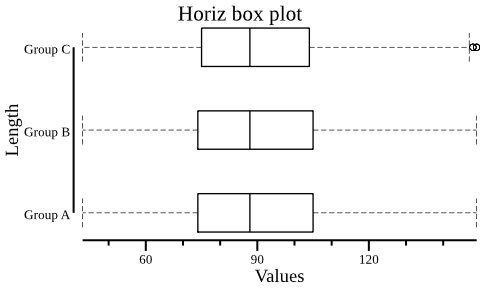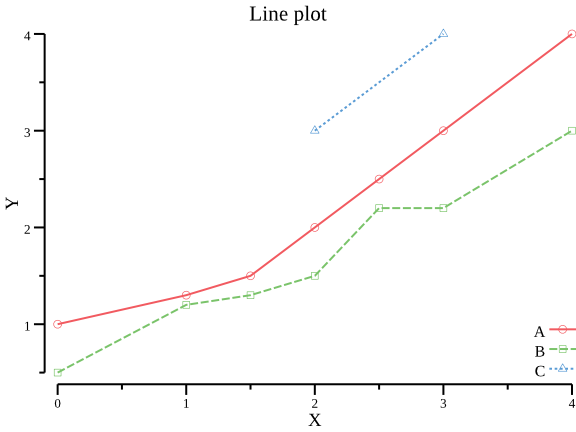shenwei356 / Csvtk
Projects that are alternatives of or similar to Csvtk
csvtk - A cross-platform, efficient and practical CSV/TSV toolkit
- Documents: http://bioinf.shenwei.me/csvtk ( Usage and Tutorial). 中文介绍
-
Source code: https://github.com/shenwei356/csvtk
-
Latest version:
Introduction
Similar to FASTA/Q format in field of Bioinformatics, CSV/TSV formats are basic and ubiquitous file formats in both Bioinformatics and data science.
People usually use spreadsheet software like MS Excel to process table data. However this is all by clicking and typing, which is not automated and is time-consuming to repeat, especially when you want to apply similar operations with different datasets or purposes.
You can also accomplish some CSV/TSV manipulations using shell commands, but more code is needed to handle the header line. Shell commands do not support selecting columns with column names either.
csvtk is convenient for rapid data investigation
and also easy to integrate into analysis pipelines.
It could save you lots of time in (not) writing Python/R scripts.
Table of Contents
- Features
- Subcommands
- Installation
- Command-line completion
- Compared to
csvkit - Examples
- Acknowledgements
- Contact
- License
- Starchart
Features
- Cross-platform (Linux/Windows/Mac OS X/OpenBSD/FreeBSD)
- Light weight and out-of-the-box, no dependencies, no compilation, no configuration
- Fast, multiple-CPUs supported (some commands)
- Practical functions provided by N subcommands
- Support STDIN and gziped input/output file, easy being used in pipe
- Most of the subcommands support unselecting fields and fuzzy fields,
e.g.
-f "-id,-name"for all fields except "id" and "name",-F -f "a.*"for all fields with prefix "a.". - Support some common plots (see usage)
Seamlessly support for data with meta line (e.g.,sep=,) of separator declaration used by MS Excel
Subcommands
47 subcommands in total.
Information
-
headers: prints headers -
dim: dimensions of CSV file -
nrow: print number of records -
ncol: print number of columns -
summary: summary statistics of selected numeric or text fields (groupby group fields) -
watch: online monitoring and histogram of selected field -
corr: calculate Pearson correlation between numeric columns
Format conversion
-
pretty: converts CSV to readable aligned table -
csv2tab: converts CSV to tabular format -
tab2csv: converts tabular format to CSV -
space2tab: converts space delimited format to CSV -
transpose: transposes CSV data -
csv2md: converts CSV to markdown format -
csv2json: converts CSV to JSON format -
csv2xlsx: convert CSV/TSV files to XLSX file -
xlsx2csv: converts XLSX to CSV format
Set operations
-
head: prints first N records -
concat: concatenates CSV/TSV files by rows -
sample: sampling by proportion -
cut: select and arrange fields -
grep: greps data by selected fields with patterns/regular expressions -
uniq: unique data without sorting -
freq: frequencies of selected fields -
inter: intersection of multiple files -
filter: filters rows by values of selected fields with arithmetic expression -
filter2: filters rows by awk-like arithmetic/string expressions -
join: join files by selected fields (inner, left and outer join) -
splitsplits CSV/TSV into multiple files according to column values -
splitxlsx: splits XLSX sheet into multiple sheets according to column values -
comb: compute combinations of items at every row
Edit
-
add-header: add column names -
del-header: delete column names -
rename: renames column names with new names -
rename2: renames column names by regular expression -
replace: replaces data of selected fields by regular expression -
round: round float to n decimal places -
mutate: creates new columns from selected fields by regular expression -
mutate2: creates new column from selected fields by awk-like arithmetic/string expressions -
sep: separate column into multiple columns -
gather: gathers columns into key-value pairs -
unfold: unfold multiple values in cells of a field -
fold: fold multiple values of a field into cells of groups
Ordering
-
sort: sorts by selected fields
Ploting
Misc
-
catstream file and report progress -
versionprint version information and check for update -
genautocompletegenerate shell autocompletion script (bash|zsh|fish|powershell)
Installation
csvtk is implemented in Go programming language,
executable binary files for most popular operating systems are freely available
in release page.
Method 1: Download binaries (latest stable/dev version)
Just download compressed
executable file of your operating system,
and decompress it with tar -zxvf *.tar.gz command or other tools.
And then:
-
For Linux-like systems
-
If you have root privilege simply copy it to
/usr/local/bin:sudo cp csvtk /usr/local/bin/ -
Or copy to anywhere in the environment variable
PATH:mkdir -p $HOME/bin/; cp csvtk $HOME/bin/
-
-
For windows, just copy
csvtk.exetoC:\WINDOWS\system32.
Method 2: Install via conda (latest stable version) 

conda install -c bioconda csvtk
Method 3: For Go developer (latest stable/dev version)
go get -u github.com/shenwei356/csvtk/csvtk
Method 4: For ArchLinux AUR users (may be not the latest)
yaourt -S csvtk
Command-line completion
Bash:
# generate completion shell
csvtk genautocomplete --shell bash
# configure if never did.
# install bash-completion if the "complete" command is not found.
echo "for bcfile in ~/.bash_completion.d/* ; do source \$bcfile; done" >> ~/.bash_completion
echo "source ~/.bash_completion" >> ~/.bashrc
Zsh:
# generate completion shell
csvtk genautocomplete --shell zsh --file ~/.zfunc/_csvtk
# configure if never did
echo 'fpath=( ~/.zfunc "${fpath[@]}" )' >> ~/.zshrc
echo "autoload -U compinit; compinit" >> ~/.zshrc
fish:
csvtk genautocomplete --shell fish --file ~/.config/fish/completions/csvtk.fish
Compared to csvkit
csvkit, attention: this table wasn't updated for 2 years.
| Features | csvtk | csvkit | Note |
|---|---|---|---|
| Read Gzip | Yes | Yes | read gzip files |
| Fields ranges | Yes | Yes | e.g. -f 1-4,6
|
| Unselect fileds | Yes | -- | e.g. -1 for excluding first column |
| Fuzzy fields | Yes | -- | e.g. ab* for columns with name prefix "ab" |
| Reorder fields | Yes | Yes | it means -f 1,2 is different from -f 2,1
|
| Rename columns | Yes | -- | rename with new name(s) or from existed names |
| Sort by multiple keys | Yes | Yes | bash sort like operations |
| Sort by number | Yes | -- | e.g. -k 1:n
|
| Multiple sort | Yes | -- | e.g. -k 2:r -k 1:nr
|
| Pretty output | Yes | Yes | convert CSV to readable aligned table |
| Unique data | Yes | -- | unique data of selected fields |
| frequency | Yes | -- | frequencies of selected fields |
| Sampling | Yes | -- | sampling by proportion |
| Mutate fields | Yes | -- | create new columns from selected fields |
| Repalce | Yes | -- | replace data of selected fields |
Similar tools:
- csvkit - A suite of utilities for converting to and working with CSV, the king of tabular file formats. http://csvkit.rtfd.org/
- xsv - A fast CSV toolkit written in Rust.
- miller - Miller is like sed, awk, cut, join, and sort for name-indexed data such as CSV and tabular JSON http://johnkerl.org/miller
- tsv-utils - Command line utilities for tab-separated value files written in the D programming language.
Examples
Attention
- The CSV parser requires all the lines have same number of fields/columns. Even lines with spaces will cause error. Use '-I/--ignore-illegal-row' to skip these lines if neccessary.
- By default, csvtk thinks your files have header row, if not, switch flag
-Hon. - Column names better be unique.
- By default, lines starting with
#will be ignored, if the header row starts with#, please assign flag-Canother rare symbol, e.g.'$'. - By default, csvtk handles CSV files, use flag
-tfor tab-delimited files. - If
"exists in tab-delimited files, use flag-l. - Do not mix use field (column) numbers and names.
Examples
-
Pretty result
$ csvtk pretty names.csv id first_name last_name username 11 Rob Pike rob 2 Ken Thompson ken 4 Robert Griesemer gri 1 Robert Thompson abc NA Robert Abel 123 -
Summary of selected numeric fields, supporting "group-by"
$ cat testdata/digitals2.csv \ | csvtk summary --ignore-non-digits --fields f4:sum,f5:sum --groups f1,f2 \ | csvtk pretty f1 f2 f4:sum f5:sum bar xyz 7.00 106.00 bar xyz2 4.00 4.00 foo bar 6.00 3.00 foo bar2 4.50 5.00 -
Select fields/columns (
cut)- By index:
csvtk cut -f 1,2 - By names:
csvtk cut -f first_name,username -
Unselect:
csvtk cut -f -1,-2orcsvtk cut -f -first_name -
Fuzzy fields:
csvtk cut -F -f "*_name,username" - Field ranges:
csvtk cut -f 2-4for column 2,3,4 orcsvtk cut -f -3--1for discarding column 1,2,3 - All fields:
csvtk cut -F -f "*"
- By index:
-
Search by selected fields (
grep) (matched parts will be highlighted as red)- By exactly matching:
csvtk grep -f first_name -p Robert -p Rob - By regular expression:
csvtk grep -f first_name -r -p Rob - By pattern list:
csvtk grep -f first_name -P name_list.txt - Remore rows containing missing data (NA):
csvtk grep -F -f "*" -r -p "^$" -v
- By exactly matching:
-
Rename column names (
renameandrename2)- Setting new names:
csvtk rename -f A,B -n a,borcsvtk rename -f 1-3 -n a,b,c - Replacing with original names by regular express:
cat ../testdata/c.csv | ./csvtk rename2 -F -f "*" -p "(.*)" -r 'prefix_$1'for adding prefix to all column names.
- Setting new names:
-
Edit data with regular expression (
replace)- Remove Chinese charactors:
csvtk replace -F -f "*_name" -p "\p{Han}+" -r ""
- Remove Chinese charactors:
-
Create new column from selected fields by regular expression (
mutate)- In default, copy a column:
csvtk mutate -f id - Extract prefix of data as group name (get "A" from "A.1" as group name):
csvtk mutate -f sample -n group -p "^(.+?)\."
- In default, copy a column:
-
Sort by multiple keys (
sort)- By single column :
csvtk sort -k 1orcsvtk sort -k last_name - By multiple columns:
csvtk sort -k 1,2orcsvtk sort -k 1 -k 2orcsvtk sort -k last_name,age - Sort by number:
csvtk sort -k 1:norcsvtk sort -k 1:nrfor reverse number - Complex sort:
csvtk sort -k region -k age:n -k id:nr - In natural order:
csvtk sort -k chr:N
- By single column :
-
Join multiple files by keys (
join)- All files have same key column:
csvtk join -f id file1.csv file2.csv - Files have different key columns:
csvtk join -f "username;username;name" names.csv phone.csv adress.csv -k
- All files have same key column:
-
Filter by numbers (
filter)- Single field:
csvtk filter -f "id>0" -
Multiple fields:
csvtk filter -f "1-3>0" - Using
--anyto print record if any of the field satisfy the condition:csvtk filter -f "1-3>0" --any -
fuzzy fields:
csvtk filter -F -f "A*!=0"
- Single field:
-
Filter rows by awk-like arithmetic/string expressions (
filter2)- Using field index:
csvtk filter2 -f '$3>0' - Using column names:
csvtk filter2 -f '$id > 0' - Both arithmetic and string expressions:
csvtk filter2 -f '$id > 3 || $username=="ken"' - More complicated:
csvtk filter2 -H -t -f '$1 > 2 && $2 % 2 == 0'
- Using field index:
-
Ploting
-
plot histogram with data of the second column:
csvtk -t plot hist testdata/grouped_data.tsv.gz -f 2 | display -
plot boxplot with data of the "GC Content" (third) column, group information is the "Group" column.
csvtk -t plot box testdata/grouped_data.tsv.gz -g "Group" \ -f "GC Content" --width 3 | display -
plot horiz boxplot with data of the "Length" (second) column, group information is the "Group" column.
csvtk -t plot box testdata/grouped_data.tsv.gz -g "Group" -f "Length" \ --height 3 --width 5 --horiz --title "Horiz box plot" | display
-
Acknowledgements
We are grateful to Zhiluo Deng and Li Peng for suggesting features and reporting bugs.
Thanks Albert Vilella for features suggestion, which makes csvtk feature-rich。
Contact
Create an issue to report bugs, propose new functions or ask for help.
Or leave a comment.










